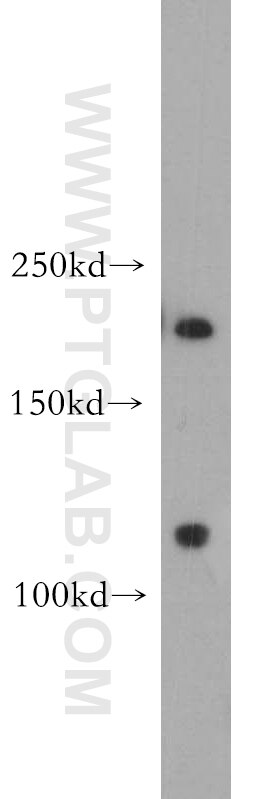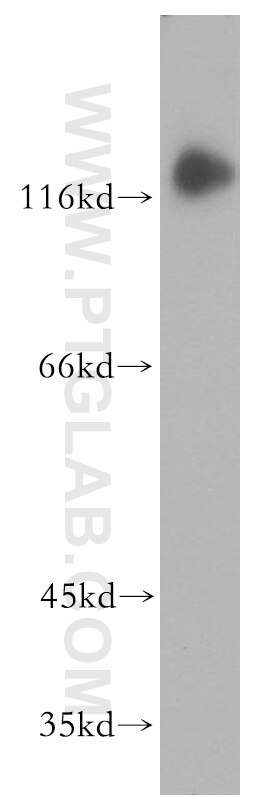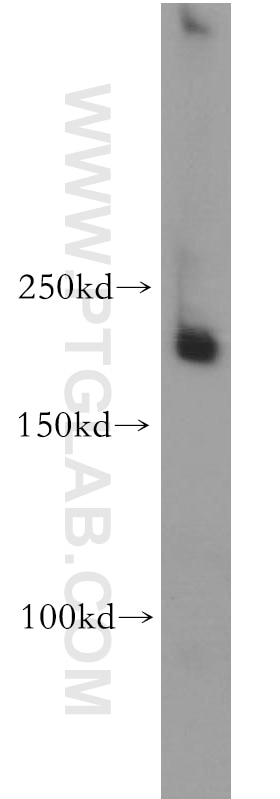Tested Applications
| Positive WB detected in | human skeletal muscle tissue, mouse uterus tissue |
Recommended dilution
| Application | Dilution |
|---|---|
| Western Blot (WB) | WB : 1:500-1:2000 |
| It is recommended that this reagent should be titrated in each testing system to obtain optimal results. | |
| Sample-dependent, Check data in validation data gallery. | |
Product Information
18791-1-AP targets MTUS1 in WB, ELISA applications and shows reactivity with human, mouse, rat samples.
| Tested Reactivity | human, mouse, rat |
| Host / Isotype | Rabbit / IgG |
| Class | Polyclonal |
| Type | Antibody |
| Immunogen | MTUS1 fusion protein Ag5605 Predict reactive species |
| Full Name | mitochondrial tumor suppressor 1 |
| Calculated Molecular Weight | 51 kDa, 141 kDa |
| Observed Molecular Weight | 120 kDa, 180 kDa |
| GenBank Accession Number | BC033842 |
| Gene Symbol | MTUS1 |
| Gene ID (NCBI) | 57509 |
| Conjugate | Unconjugated |
| Form | Liquid |
| Purification Method | Antigen affinity purification |
| UNIPROT ID | Q9ULD2 |
| Storage Buffer | PBS with 0.02% sodium azide and 50% glycerol, pH 7.3. |
| Storage Conditions | Store at -20°C. Stable for one year after shipment. Aliquoting is unnecessary for -20oC storage. 20ul sizes contain 0.1% BSA. |
Background Information
MTUS1, also named as ATBP, ATIP, GK1, KIAA1288 and MTSG1, Belongs to the MTUS1 family. It cooperates with AGTR2 to inhibit ERK2 activation and cell proliferation. MTUS1 may be required for AGTR2 cell surface expression. Together with PTPN6, induces UBE2V2 expression upon angiotensin-II stimulation. Isoform 1 inhibits breast cancer cell proliferation, delays the progression of mitosis by prolonging metaphase and reduces tumor growth. MTUS1 up-regulation during cellular transition from proliferation to quiescence and differentiation. It is a potential tumor suppressor gene located at chromosome 8p21.3.22, near marker D8S254. According to the functional data and intracellular localization, MTUS1 also named as mitochondrial tumor suppressor gene 1 (MTSG1). One main feature common to all ATIP members is the presence of a large C-terminal coiled-coil domain that allows homo- and hetero-dimerization of these proteins. (PMID:12692079, 15123706) The antibody can recognize all the isoforms except isoform 5 (85-90kd). The antibody tested HomoDimer isoforms (110-120/180kd) in Human skeletal muscle.







